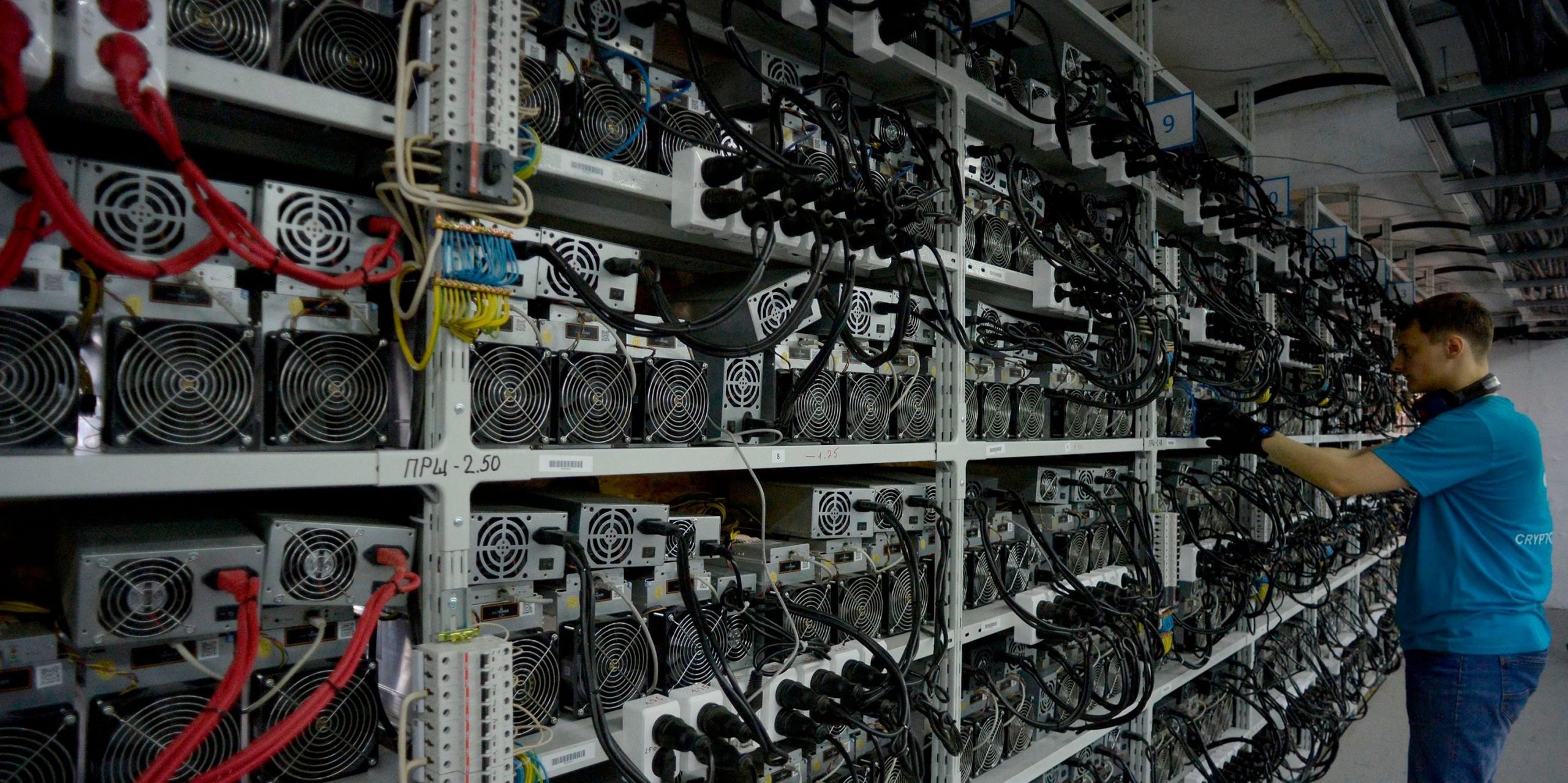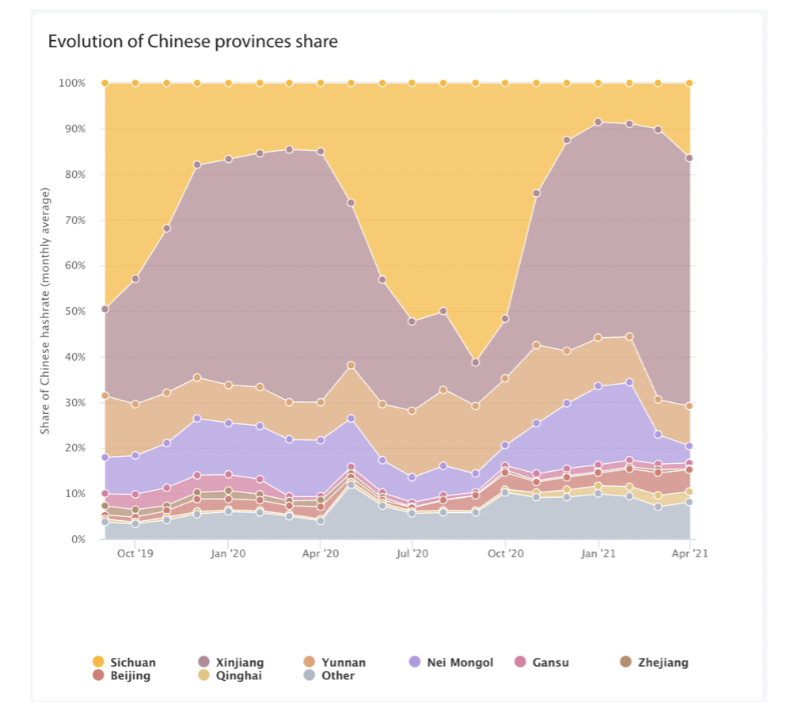
Olga Maltseva/Getty Images
- The US's share of the total bitcoin hashrate increased from 4.6% to 16.8% from September 2019 to April 2021.
- During the same time period, China's share of the hashrate declined from 75.5% to 46%, before mining restrictions were even imposed.
- Data show the ongoing migration of bitcoin mining out of China.
- Sign up here for our daily newsletter, 10 Things Before the Opening Bell.
New data from the Cambridge Centre for Alternative Finance (CCAF) shines a light on the state of the opaque bitcoin mining industry and puts empirical evidence behind the migration of the hashrate out of China.
Bitcoin's hasrate is a key measure network health and gauges how much computing power is supporting it.
According to the CCAF, the US's share of the total bitcoin hashrate increased from a mere 4.6% to 16.8% from September 2019 to April 2021. Meanwhile, China's share of total bitcoin mining power declined from 75.5% to 46% in April 2021, before Chinese authorities imposed mining restrictions across the country.
Bitcoin mining experts have touted the benefits of moving a large concentration of bitcoin mining out of China: a hashrate that's more spread out across different regions will be decentralized and less vulnerable to the regulations of one country.
The CCAF data comes with a caveat that China's decline is in relative, not absolute terms, explained Michel Rauchs, the research center's digital assets lead.
From Sept 2019 to April 2021, bitcoin's hashrate nearly doubled, but all of the new hashrate was deployed outside of China. China kept its absolute hashrate at roughly the same level.
"This suggests that China had become less attractive for miners to set up shop, for a variety of reasons not covered by our data, long before the crackdown," Rauchs told Insider.
He also explained that the US, along with Kazakhstan, has been the largest beneficiary from this change. From Sept 2019-April 2021, Kazakhstan's share of the hashrate grew 600%.
Meanwhile, the hashrate has continued to move out of China following the country's latest regulatory crackdown.
"Following the announcement of the crackdown in June 2021, almost all of China's hashrate has disappeared and is now on the move, looking for existing power capacity overseas that can absorb this huge demand," he said.
The CCAF's bitcoin mining data is based on an extrapolation of a sample of mining pool data. The sample only represents 37% of the total hashrate but the researchers said it "provides a reasonable approximation of the actual hashrate distribution."
The research also uncovered empirical data that confirms for the first time that miners in China migrate seasonally according to the availability of hydro-generated electricity. According to the CCAF's data set, in 2020, Sichuan's share of China's total Bitcoin mining power increased from 14.9% at the beginning of the wet season to 61.1% at
the peak. Conversely, Xinjiang's mainly coal-powered hashrate share for the same period decreased from
55.1% at the beginning of the wet season to 9.6% at the lowest point.



